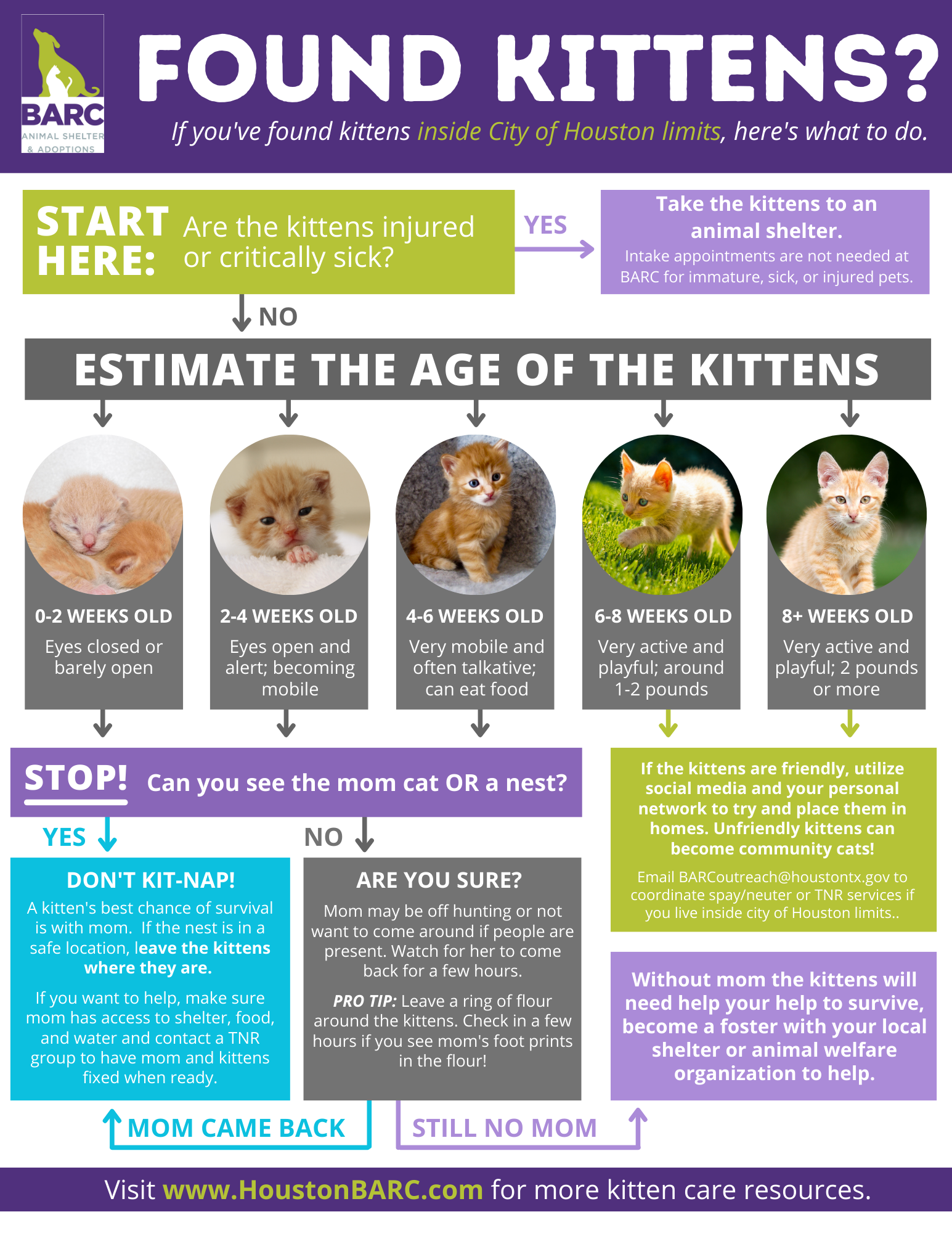BARC ANIMAL SHELTER AND ADOPTIONS
Helpful Links
They’re cute, cuddly and desperately in need of your help. Or are they?
During kitten season, it is not uncommon for one to find a litter of kittens outdoors. One might think they are abandoned but sometimes the mother cat can be right around the corner. It’s natural to want to scoop them up and try to care for them yourself or take them to a shelter. Both of those options may place them in more danger. To give newborn kittens the best chance of survival, follow these steps:
- Leave the kittens alone and try to figure out if their mom is still around. You might have come across the kittens in the middle of their mother moving them to another location. Mom could also be out searching for food, taking a break, or even hiding from you! Observe the kittens from a distance, at least 30 feet away, every couple of hours for 12 to 18 hours. If the kittens seem clean, warm, and are not fussing, there’s a good chance their mom might be coming back.
- Assess the situation. Is the spot where the kittens are a high foot traffic area? Is it raining? If the kittens are in immediate danger due to their location, move them to a safer spot nearby so the mom can easily find them when she returns.
- If you spot the mom and the area is relatively safe for the family, leave the kittens alone. There is no one better to care for their kittens than their own mom. Leave the kittens with mom until they are weaned (5-6weeks). When the kittens have been eating on their own for about four weeks or are big enough for surgery (typically when they’re between two and three months old), humanely trap the whole family and have them spayed or neutered. A local TNR program may be able to help you with the trapping process. After the cats are fixed, release them at the location where you found them. TNR is the most humane method of preventing cats and kittens from entering the shelter system.
- If the mother does not come back, you may step in. It is imperative that you keep the kittens warm and dry while you come up with a plan. You can do so by placing the kittens in a box with clean soft towels and with a warming bottle. You can make a DIY heating pad using a tube sock and rice. Kittens cannot regulate their own body temperatures so keeping them warm is very important. Kittens are more likely to die from hypothermia than starvation.
- If the kittens are dirty, cold, or appear sick, underweight or dehydrated, bring them to BARC located at 2700 Evella Street from 9am to 5pm. Please note no appointment is necessary, but wait times for unscheduled intakes may take up to 3 hours for processing, if approved.
If you are looking for ways to help please consider donating, volunteering, or fostering! To contact our foster program please email barcfoster@houstontx.gov.

See below for additional helpful links:







